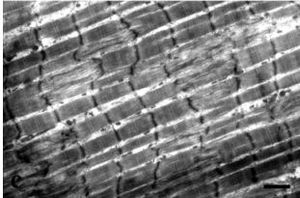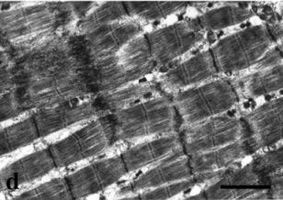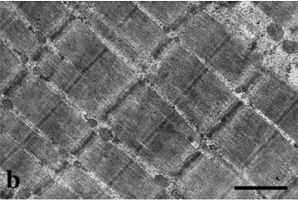Difference between revisions of "Downhill Running"
User:Fellrnr (User talk:Fellrnr | contribs) |
User:Fellrnr (User talk:Fellrnr | contribs) |
||
| Line 1: | Line 1: | ||
Many running plans include some ‘hill training’, which generally consists of either running a hilly course, or running hard uphill to build strength, aerobic and anaerobic capacity. While these techniques can be useful, they do not focus on the most important part of the hill – the downhill. While the uphill may seem to be the difficult part of the hill, for endurance runners the greatest benefit comes from the downhill. When running uphill, a runner can reduce pace so that the effort is close to the effort on the flat. The impact on the muscles and joints is generally lower when going uphill than on the flat as the flight phase of the running stride has less decent than ascent. | Many running plans include some ‘hill training’, which generally consists of either running a hilly course, or running hard uphill to build strength, aerobic and anaerobic capacity. While these techniques can be useful, they do not focus on the most important part of the hill – the downhill. While the uphill may seem to be the difficult part of the hill, for endurance runners the greatest benefit comes from the downhill. When running uphill, a runner can reduce pace so that the effort is close to the effort on the flat. The impact on the muscles and joints is generally lower when going uphill than on the flat as the flight phase of the running stride has less decent than ascent. | ||
| + | |||
| + | <gallery widths=300px heights=200px caption="Muscle damage from downhill running"> | ||
| + | File:EccentricA.JPG|Muscle before downhill running<ref name="images"/> | ||
| + | File:EccentricC.JPG|Immediately after downhill running<ref name="images"/>. Notice the disruption to the dark bands (z-bands) that are part of the muscle structure showing there is immediate damage. | ||
| + | File:EccentricD.JPG|One day later<ref name="images"/>, the damage and disruption is worse, indicated some continued breakdown. | ||
| + | File:EccentricB.JPG|Muscle 14 days later<ref name="images"/>, fully recovered | ||
| + | </gallery> | ||
Downhill running is tough for several reasons, but the main one is that downhill running does more muscle damage. This damage causes immediate weakness in the muscles, as well as soreness in a day or two. (See [[Delayed Onset Muscle Soreness]] for more details.) If you’ve ever run a long steep descent and felt that your legs are numb or shaky, you’ve experienced this damage. The good news is that the more downhill running you do, the more you muscles adapt to be able to handle the load. An approach for downhill training is documented at [[Downhill Intervals]]. | Downhill running is tough for several reasons, but the main one is that downhill running does more muscle damage. This damage causes immediate weakness in the muscles, as well as soreness in a day or two. (See [[Delayed Onset Muscle Soreness]] for more details.) If you’ve ever run a long steep descent and felt that your legs are numb or shaky, you’ve experienced this damage. The good news is that the more downhill running you do, the more you muscles adapt to be able to handle the load. An approach for downhill training is documented at [[Downhill Intervals]]. | ||
| − | Running efficiently downhill can make a significant difference to race performance. Running hard up the hills and recovering on the downhill makes for slower race times. An increase in intensity will make a small difference to the uphill pace, but it can make a large difference to the downhill pace. I suspect that downhill training also helps with flat races. All running involves some of the stresses that cause [[Delayed Onset Muscle Soreness]], and having resistance to this damage can keep you strong through to the end of the race. | + | Running efficiently downhill can make a significant difference to race performance. Running hard up the hills and recovering on the downhill makes for slower race times. An increase in intensity will make a small difference to the uphill pace, but it can make a large difference to the downhill pace. I suspect that downhill training also helps with flat races. All running involves some of the stresses that cause [[Delayed Onset Muscle Soreness]], and having resistance to this damage can keep you strong through to the end of the race. I consider downhill running one of my [[Running Breakthroughs]] |
| − | |||
==See Also== | ==See Also== | ||
* [[Delayed Onset Muscle Soreness]] | * [[Delayed Onset Muscle Soreness]] | ||
* [[Downhill Intervals]] | * [[Downhill Intervals]] | ||
| + | |||
==Feedback== | ==Feedback== | ||
A friend sent this feedback to my local running group | A friend sent this feedback to my local running group | ||
| Line 20: | Line 27: | ||
''Maybe this will help someone else; I was just so pleased with my discovery I wanted to share. Today's hilly run turned out well: 2 mi hills, 6 mi pretty flat, 2 mi hills - overall average 7:14.'' | ''Maybe this will help someone else; I was just so pleased with my discovery I wanted to share. Today's hilly run turned out well: 2 mi hills, 6 mi pretty flat, 2 mi hills - overall average 7:14.'' | ||
| + | |||
| + | ==References== | ||
| + | <references> | ||
| + | <ref name="images">Neuromuscular disease-associated proteins and eccentric exercise http://jp.physoc.org/content/543/1/297.full.pdf</ref> | ||
| + | </references> | ||
Revision as of 19:06, 12 August 2011
Many running plans include some ‘hill training’, which generally consists of either running a hilly course, or running hard uphill to build strength, aerobic and anaerobic capacity. While these techniques can be useful, they do not focus on the most important part of the hill – the downhill. While the uphill may seem to be the difficult part of the hill, for endurance runners the greatest benefit comes from the downhill. When running uphill, a runner can reduce pace so that the effort is close to the effort on the flat. The impact on the muscles and joints is generally lower when going uphill than on the flat as the flight phase of the running stride has less decent than ascent.
- Muscle damage from downhill running
Muscle before downhill running[1]
Immediately after downhill running[1]. Notice the disruption to the dark bands (z-bands) that are part of the muscle structure showing there is immediate damage.
One day later[1], the damage and disruption is worse, indicated some continued breakdown.
Muscle 14 days later[1], fully recovered
Downhill running is tough for several reasons, but the main one is that downhill running does more muscle damage. This damage causes immediate weakness in the muscles, as well as soreness in a day or two. (See Delayed Onset Muscle Soreness for more details.) If you’ve ever run a long steep descent and felt that your legs are numb or shaky, you’ve experienced this damage. The good news is that the more downhill running you do, the more you muscles adapt to be able to handle the load. An approach for downhill training is documented at Downhill Intervals.
Running efficiently downhill can make a significant difference to race performance. Running hard up the hills and recovering on the downhill makes for slower race times. An increase in intensity will make a small difference to the uphill pace, but it can make a large difference to the downhill pace. I suspect that downhill training also helps with flat races. All running involves some of the stresses that cause Delayed Onset Muscle Soreness, and having resistance to this damage can keep you strong through to the end of the race. I consider downhill running one of my Running Breakthroughs
1 See Also
2 Feedback
A friend sent this feedback to my local running group
I have enjoyed listening to Jonathan's thoughts and advice on many running topics, but one that I always struggled with was "running uphill is easy, it's the downhill that's hard." Now, on a theoretical level this made sense, because maintaining even effort on the uphill simply means shortening your stride, while running downhill can be a balance between going faster and maintaining control.
My personal experiences with hill running has not been that they are easy. I'll be cruising along and see a hill approaching; my heart rate will surge in anticipation and I will grit my teeth in preparation for the charge up the hill. It doesn't help that there's also a little voice saying "you're going to have to run it twice"
So here is my breakthrough for the day: I _allowed_ myself to run easier on the uphills. Rather than tighten up in anticipation, I focused on staying relaxed, telling myself that it was OK to slow down, just keep my feet light and my turnover quick. Now, rather than exerting extra effort, I was breathing easier and before I knew it I was over the top. I've always done pretty well going downhill, but I focused on an even effort and lengthened my stride only as much as necessary. An important note: it takes concentration on the downhills - you end up going pretty quickly, and you really don't want to get distracted.
Maybe this will help someone else; I was just so pleased with my discovery I wanted to share. Today's hilly run turned out well: 2 mi hills, 6 mi pretty flat, 2 mi hills - overall average 7:14.
3 References
- ↑ 1.0 1.1 1.2 1.3 Neuromuscular disease-associated proteins and eccentric exercise http://jp.physoc.org/content/543/1/297.full.pdf



